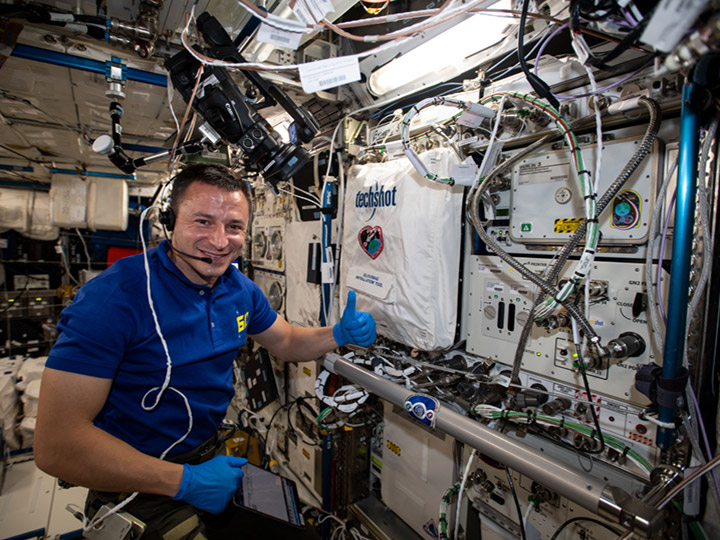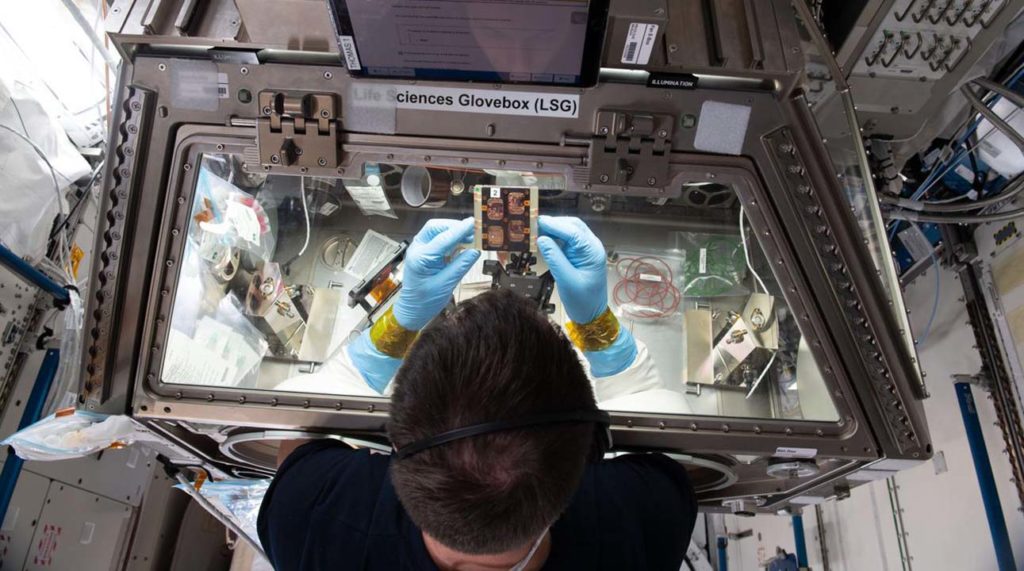Responsible for the U.S. portion of the International Space Station (ISS), the ISS National Laboratory sends payloads to space, both from commercial firms and academic institutions. Now, the ISS National Laboratory wants to undertake a series of experiments that will be of benefit to both future space explorers and everyone who stays behind. The lab is looking to bioprint tissues in Low Earth Orbit (LEO) for the purpose of pursuing new discoveries as well as making viable in-space fabrication.
Bioprinting and regenerative medicine are areas of interest for space researchers, in particular because it is believed that tissue engineering and stem cell research can benefit from the effects of microgravity. An example mentioned by the ISS National Laboratory is a project by Emory University to grow heart cells. Redwire Space’s Biofabrication facility (BFF) will be available for these projects but experiments could also be held using other equipment on board. If you would like to participate, then a Concept Summary is due by November 29th, so get cracking on that.
Stations in Space
The ISS was and continues to be a frightfully expensive project, with a $150 billion cost to initially build with running costs of around $4 billion a year. LEO space stations bring a lot of efficiencies for space travel and exploitation, however. Serving like oases in space, they could be used to repair, launch, and upgrade satellites. They could also serve as locations to distribute and convey cargo and people to other points in space. Primarily, space stations can be used to stage further space exploration missions. They could also project power and serve as crucial forts in any future space-based confrontations.
However, we have over 4,500 satellites in orbit but just two space stations at the moment. The ISS and the Chinese Tiangong station are some of the most complex endeavors that we humans are engaged in. If commercial or more extensive government space stations are to become a reality, something will have to change.
The most obvious possibility is to eliminate the human element. A space station without people will be much smaller, more compact, and efficient. It wouldn’t need all of the oxygen, water, food and waste management, storage and disposal that we need now to keep the astronauts alive. It also wouldn’t need a lot of empty space for astronauts to wave to school kids. Clearly, this may be the best option: a no-people-involved space station.
Humans have never been a very rational species, though, and the people part of space flight is what keeps the headlines coming, so a robotic space station probably not happen. Barring this, significant investor money will have to go to the development of these stations and they will have to commercially exploit them. Commercial space stations are potentially very lucrative, like boom towns adjacent to railway stations in the old West. Nanoracks’ Starlab station is an attempt at doing just that. However, the investment will be obscene and the patience and fortitude will have to be formidable.
The National Lab is looking now to change the economics of space stations. How many 3D printed hearts will keep the ISS flying? Besides the fact that the new project is a very cool one, it could also be very useful. Microgravity changes many things, stem cells grow faster in space, alongside higher quality optical fiber that Redwire also creates. The ISS affords humanity an opportunity to carry out long-term experiments in a unique location. That special place could be used to test items for their use in space, such as the Additive Manufacturing Facility 3D printer on board, which could make spare parts for future missions, or the metal printer that will find its way to ISS next year.
Additionally, there could also be research with very beneficial effects for those here on earth. For example, the ISS has been used to test solar panels while the environment is perfect for studying semiconductors more precisely. If these stations could be used to grow better hearts, then perhaps they could be financially solvent and we could have platforms in space that pay for themselves while advancing space exploration.
Subscribe to Our Email Newsletter
Stay up-to-date on all the latest news from the 3D printing industry and receive information and offers from third party vendors.
You May Also Like
Profiling a Construction 3D Printing Pioneer: US Army Corps of Engineers’ Megan Kreiger
The world of construction 3D printing is still so new that the true experts can probably be counted on two hands. Among them is Megan Kreiger, Portfolio Manager of Additive...
US Army Corps of Engineers Taps Lincoln Electric & Eaton for Largest 3D Printed US Civil Works Part
The Soo Locks sit on the US-Canadian border, enabling maritime travel between Lake Superior and Lake Huron, from which ships can reach the rest of the Great Lakes. Crafts carrying...
Construction 3D Printing CEO Reflects on Being Female in Construction
Natalie Wadley, CEO of ChangeMaker3D, could hear the words of her daughter sitting next to her resounding in her head. “Mum, MUM, you’ve won!” Wadley had just won the prestigious...
1Print to Commercialize 3D Printed Coastal Resilience Solutions
1Print, a company that specializes in deploying additive construction (AC) for infrastructure projects, has entered an agreement with the University of Miami (UM) to accelerate commercialization of the SEAHIVE shoreline...
































